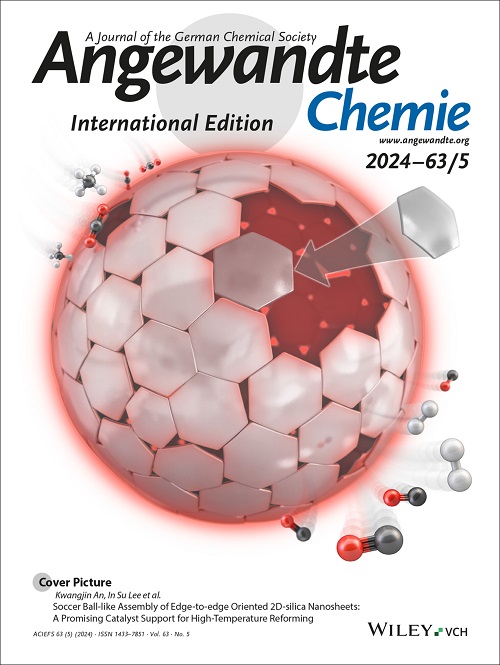Progressive Learning‐Guided Discovery of Single‐Atom Metal Oxide Catalysts for Acidic Oxygen Evolution Reaction
IF 16.1
1区 化学
Q1 CHEMISTRY, MULTIDISCIPLINARY
引用次数: 0
Abstract
The oxygen evolution reaction (OER) is a key bottleneck in clean energy conversion due to sluggish kinetics and high overpotentials. Transition metal single‐atom catalysts offer great promise for OER optimization thanks to their high atomic efficiency and tunable electronic structures. However, intrinsic scaling relationships between adsorbed intermediates limit catalytic performance and complicate discovery through conventional machine learning (ML). To overcome this, we combined density functional theory (DFT) with a progressive learning strategy within an active learning framework. By first predicting adsorption energies as auxiliary features, our ML model achieved improved sensitivity to rare, high‐activity candidates. High‐throughput screening of 261 transition metal single‐atom‐doped metal oxides (MSA‐MOx) identified nine top‐performing catalysts (theoretical overpotential < 0.5 V), including MnSA‐RuO2 and FeSA‐TiO2 (theoretical overpotential < 0.3 V). Data mining revealed key theoretical descriptors governing OER activity, while electronic structure analysis pinpointed intermediate binding strength as the key performance driver. Further constant‐potential DFT calculations and experimental evaluation of MnSA‐RuO2 confirmed its low overpotential and excellent durability under acidic conditions. This integrated framework, which connects theoretical modeling, machine learning prediction, and experimental validation, accelerates the discovery of efficient OER catalysts and provides mechanistic insights for the rational design of materials in sustainable energy technologies.渐进式学习引导下的酸性析氧反应单原子金属氧化物催化剂的发现
析氧反应(OER)是清洁能源转化的关键瓶颈,其动力学缓慢,过电位高。过渡金属单原子催化剂由于其高原子效率和可调谐的电子结构,为OER优化提供了巨大的希望。然而,吸附中间体之间固有的尺度关系限制了催化性能,并使传统机器学习(ML)的发现复杂化。为了克服这个问题,我们将密度泛函理论(DFT)与主动学习框架内的渐进式学习策略相结合。通过首先预测吸附能作为辅助特征,我们的ML模型提高了对稀有、高活性候选物的敏感性。261种过渡金属单原子掺杂金属氧化物(MSA - MOx)的高通量筛选鉴定出9种表现最佳的催化剂(理论过电位<;0.5 V),包括MnSA‐RuO2和FeSA‐TiO2(理论过电位<;0.3 V)。数据挖掘揭示了控制OER活动的关键理论描述符,而电子结构分析指出中间结合强度是关键的性能驱动因素。进一步的恒电位DFT计算和实验评价证实了MnSA - RuO2在酸性条件下具有低过电位和优异的耐久性。这一集成框架将理论建模、机器学习预测和实验验证联系起来,加速了高效OER催化剂的发现,并为可持续能源技术中材料的合理设计提供了机制见解。
本文章由计算机程序翻译,如有差异,请以英文原文为准。
求助全文
约1分钟内获得全文
求助全文
来源期刊
CiteScore
26.60
自引率
6.60%
发文量
3549
审稿时长
1.5 months
期刊介绍:
Angewandte Chemie, a journal of the German Chemical Society (GDCh), maintains a leading position among scholarly journals in general chemistry with an impressive Impact Factor of 16.6 (2022 Journal Citation Reports, Clarivate, 2023). Published weekly in a reader-friendly format, it features new articles almost every day. Established in 1887, Angewandte Chemie is a prominent chemistry journal, offering a dynamic blend of Review-type articles, Highlights, Communications, and Research Articles on a weekly basis, making it unique in the field.

 求助内容:
求助内容: 应助结果提醒方式:
应助结果提醒方式:


